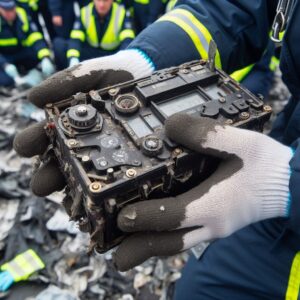Tragedy in the Skies: The Indonesian and Ethiopian Boeing 737 MAX Crashes
In late 2018 and early 2019, the aviation world was shaken by two catastrophic crashes involving Boeing 737 MAX aircraft. These tragedies, occurring just months apart, resulted in the deaths of 346 people and led to the global grounding of the 737 MAX fleet. This article delves into the details of these crashes, the subsequent investigations, and their far-reaching implications.
The Indonesian Lion Air Crash
On October 29, 2018, Lion Air Flight JT610, a Boeing 737 MAX 8, crashed into the Java Sea shortly after taking off from Jakarta, Indonesia. The crash claimed the lives of all 189 passengers and crew on board. Initial investigations pointed to issues with the Maneuvering Characteristics Augmentation System (MCAS), a new flight control system designed to prevent stalls but which had malfunctioned due to erroneous sensor data.
The Ethiopian Airlines Crash
Tragically, less than five months later, on March 10, 2019, Ethiopian Airlines Flight ET302, another Boeing 737 MAX 8, crashed near Addis Ababa, Ethiopia, killing all 157 people on board. Similar to the Lion Air crash, preliminary investigations suggested that the MCAS system had activated due to faulty sensor data, pushing the aircraft into an uncontrollable nosedive.
The Investigation and Findings
The black boxes from both the Boeing 737 MAX crashes were recovered and analyzed, revealing striking similarities. In both cases, the MCAS system repeatedly forced the aircraft into a dive despite the pilots’ attempts to regain control. The investigation highlighted a critical flaw in the design and certification process of the MCAS system, which relied on a single angle-of-attack sensor and did not provide adequate training for pilots on how to handle its malfunction.

Global Impact and Grounding of the 737 MAX
In the aftermath of the Ethiopian Airlines crash, aviation authorities worldwide grounded the Boeing 737 MAX fleet. This decision was influenced by the clear parallels between the two crashes and the urgent need to ensure passenger safety. Boeing faced intense scrutiny, and the Federal Aviation Administration (FAA) was criticized for its oversight and certification processes.

Boeing’s Response and Changes
In response to the crashes, Boeing worked on software updates for the MCAS system and implemented additional training requirements for pilots. The company also faced numerous lawsuits from the victims’ families and significant financial losses. The grounding of the 737 MAX lasted for nearly two years, during which Boeing made extensive modifications to the aircraft’s systems and worked closely with regulators to meet stringent safety standards.
FAQs of Boeing 737 MAX Crashes
What caused the crashes of Lion Air Flight JT610 and Ethiopian Airlines Flight ET302?
Both crashes were caused by the malfunction of the MCAS system, which activated due to faulty sensor data, forcing the aircraft into a nosedive that the pilots could not counteract.
How did the investigations into the crashes unfold?
Investigators analyzed the black box data from both crashes, revealing that the MCAS system had malfunctioned in similar ways. This led to a comprehensive review of Boeing’s design and certification processes for the 737 MAX.
What changes were made following the Boeing 737 MAX crashes?
Boeing updated the MCAS software to rely on data from multiple sensors, provided additional training for pilots, and improved documentation and procedures to prevent similar incidents in the future.
How long was the Boeing 737 MAX grounded?
The 737 MAX was grounded for nearly two years, from March 2019 to November 2020, while Boeing made necessary modifications and worked with regulators to ensure the aircraft’s safety.

These tragedies have left an indelible mark on aviation safety and underscored the critical importance of rigorous aircraft design, testing, and certification processes. As the aviation industry continues to evolve, the lessons learned from these incidents will hopefully lead to safer skies for all.
Also Read: Beware the Knock: The Haunting Nale Ba Legend of Bangalore
